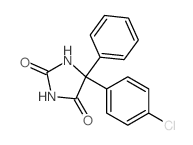1889-78-7
| Name | 2-bromo-1-(4-chlorophenyl)-2-phenylethanone |
|---|---|
| Synonyms |
1-(4-chlorophenyl)-2-bromo-2-phenylethanone
BB_SC-0155 2-bromo-1-(4-chlorophenyl)-2-phenylethan-1-one 2-bromo-1-(4-chlorophenyl)-2-phenyl ethanone |
| Density | 1.491g/cm3 |
|---|---|
| Boiling Point | 387.3ºC at 760mmHg |
| Melting Point | 65ºC |
| Molecular Formula | C14H10BrClO |
| Molecular Weight | 309.58600 |
| Flash Point | 188ºC |
| Exact Mass | 307.96000 |
| PSA | 17.07000 |
| LogP | 4.65890 |
| Vapour Pressure | 3.33E-06mmHg at 25°C |
| Index of Refraction | 1.625 |
| Storage condition | 2-8°C |
Synonym: Section 2 - COMPOSITION, INFORMATION ON INGREDIENTS
Risk Phrases: 34 Section 3 - HAZARDS IDENTIFICATION EMERGENCY OVERVIEW
Causes burns. Potential Health Effects Eye: Causes eye irritation. Skin: Causes skin irritation. May be harmful if absorbed through the skin. Ingestion: May cause irritation of the digestive tract. May be harmful if swallowed. Inhalation: Causes respiratory tract irritation. May be harmful if inhaled. Chronic: Not available. Section 4 - FIRST AID MEASURES Eyes: Immediately flush eyes with plenty of water for at least 15 minutes, occasionally lifting the upper and lower eyelids. Get medical aid immediately. Skin: Get medical aid immediately. Immediately flush skin with plenty of water for at least 15 minutes while removing contaminated clothing and shoes. Ingestion: Do not induce vomiting. Get medical aid immediately. Wash mouth out with water. Inhalation: Get medical aid immediately. Remove from exposure and move to fresh air immediately. If not breathing, give artificial respiration. If breathing is difficult, give oxygen. Notes to Physician: Treat symptomatically and supportively. Section 5 - FIRE FIGHTING MEASURES General Information: As in any fire, wear a self-contained breathing apparatus in pressure-demand, MSHA/NIOSH (approved or equivalent), and full protective gear. Extinguishing Media: Use foam, dry chemical, or carbon dioxide. Section 6 - ACCIDENTAL RELEASE MEASURES General Information: Use proper personal protective equipment as indicated in Section 8. Spills/Leaks: Vacuum or sweep up material and place into a suitable disposal container. Section 7 - HANDLING and STORAGE Handling: Do not breathe dust, vapor, mist, or gas. Do not get in eyes, on skin, or on clothing. Use only in a chemical fume hood. Storage: Store in a cool, dry place. Store in a tightly closed container. Corrosives area. Section 8 - EXPOSURE CONTROLS, PERSONAL PROTECTION Engineering Controls: Facilities storing or utilizing this material should be equipped with an eyewash facility and a safety shower. Use adequate ventilation to keep airborne concentrations low. Exposure Limits CAS# 1889-78-7: Personal Protective Equipment Eyes: Not available. Skin: Wear appropriate protective gloves to prevent skin exposure. Clothing: Wear appropriate protective clothing to prevent skin exposure. Respirators: Follow the OSHA respirator regulations found in 29 CFR 1910.134 or European Standard EN 149. Use a NIOSH/MSHA or European Standard EN 149 approved respirator if exposure limits are exceeded or if irritation or other symptoms are experienced. Section 9 - PHYSICAL AND CHEMICAL PROPERTIES Physical State: Solid Color: white Odor: Not available. pH: Not available. Vapor Pressure: Not available. Viscosity: Not available. Boiling Point: Not available. Freezing/Melting Point: 67 - 69 deg C Autoignition Temperature: Not available. Flash Point: Not available. Explosion Limits, lower: Not available. Explosion Limits, upper: Not available. Decomposition Temperature: Solubility in water: Specific Gravity/Density: Molecular Formula: C14H10BrClO Molecular Weight: 310 Section 10 - STABILITY AND REACTIVITY Chemical Stability: Not available. Conditions to Avoid: Incompatible materials. Incompatibilities with Other Materials: Strong oxidizing agents, bases, amines. Hazardous Decomposition Products: Hydrogen chloride, chlorine, carbon monoxide, carbon dioxide, hydrogen bromide, bromine. Hazardous Polymerization: Has not been reported Section 11 - TOXICOLOGICAL INFORMATION RTECS#: CAS# 1889-78-7 unlisted. LD50/LC50: Not available. Carcinogenicity: 2-Bromo-1-(4-chlorophenyl)-2-phenylethan-1-one - Not listed by ACGIH, IARC, or NTP. Section 12 - ECOLOGICAL INFORMATION Section 13 - DISPOSAL CONSIDERATIONS Dispose of in a manner consistent with federal, state, and local regulations. Section 14 - TRANSPORT INFORMATION IATA Shipping Name: CORROSIVE SOLID, ACIDIC, ORGANIC, N.O.S.* Hazard Class: 8 UN Number: 3261 Packing Group: III IMO Shipping Name: CORROSIVE SOLID, ACIDIC, ORGANIC, N.O.S. Hazard Class: 8 UN Number: 3261 Packing Group: III RID/ADR Shipping Name: CORROSIVE SOLID, ACIDIC, ORGANIC, N.O.S. Hazard Class: 8 UN Number: 3261 Packing group: III Section 15 - REGULATORY INFORMATION European/International Regulations European Labeling in Accordance with EC Directives Hazard Symbols: C Risk Phrases: R 34 Causes burns. Safety Phrases: S 26 In case of contact with eyes, rinse immediately with plenty of water and seek medical advice. S 36/37/39 Wear suitable protective clothing, gloves and eye/face protection. S 45 In case of accident or if you feel unwell, seek medical advice immediately (show the label where possible). WGK (Water Danger/Protection) CAS# 1889-78-7: No information available. Canada None of the chemicals in this product are listed on the DSL/NDSL list. CAS# 1889-78-7 is not listed on Canada's Ingredient Disclosure List. US FEDERAL TSCA CAS# 1889-78-7 is not listed on the TSCA inventory. It is for research and development use only. SECTION 16 - ADDITIONAL INFORMATION N/A |
| Hazard Codes | C:Corrosive |
|---|---|
| Risk Phrases | 36/37/38 |
| Safety Phrases | 26-36/37/39 |
| HS Code | 2914700090 |
|
~99% 
1889-78-7 |
| Literature: Gopidas, K.R.; Lohray, B.B.; Rajadurai, S.; Das, P.K.; George, M.V. Journal of Organic Chemistry, 1987 , vol. 52, # 13 p. 2831 - 2838 |
|
~% 
1889-78-7 |
| Literature: Jenkins Journal of the American Chemical Society, 1934 , vol. 56, p. 682 |
|
~% 
1889-78-7 |
| Literature: Jenkins Journal of the American Chemical Society, 1934 , vol. 56, p. 682 |
|
~% 
1889-78-7 |
| Literature: Schwenker; Guo Archiv der Pharmazie, 1993 , vol. 326, # 1 p. 45 - 50 |
|
~% 
1889-78-7 |
| Literature: Schwenker; Guo Archiv der Pharmazie, 1993 , vol. 326, # 1 p. 45 - 50 |
| Precursor 5 | |
|---|---|
| DownStream 7 | |
| HS Code | 2914700090 |
|---|---|
| Summary | HS: 2914700090 halogenated, sulphonated, nitrated or nitrosated derivatives of ketones and quinones, whether or not with other oxygen function Tax rebate rate:9.0% Supervision conditions:none VAT:17.0% MFN tariff:5.5% General tariff:30.0% |
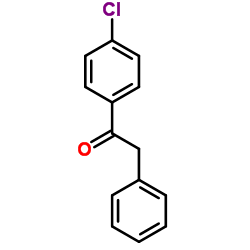


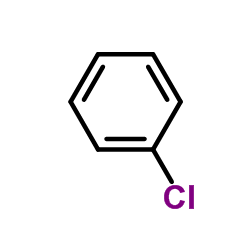
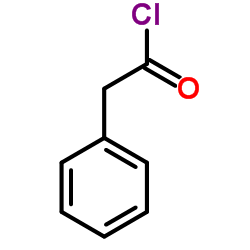
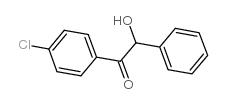

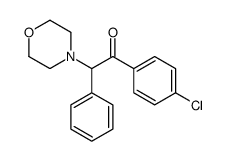


![2-[2-(4-chlorophenyl)-2-oxo-1-phenylethyl]pyridazin-3-one structure](https://image.chemsrc.com/caspic/187/917871-49-9.png)
